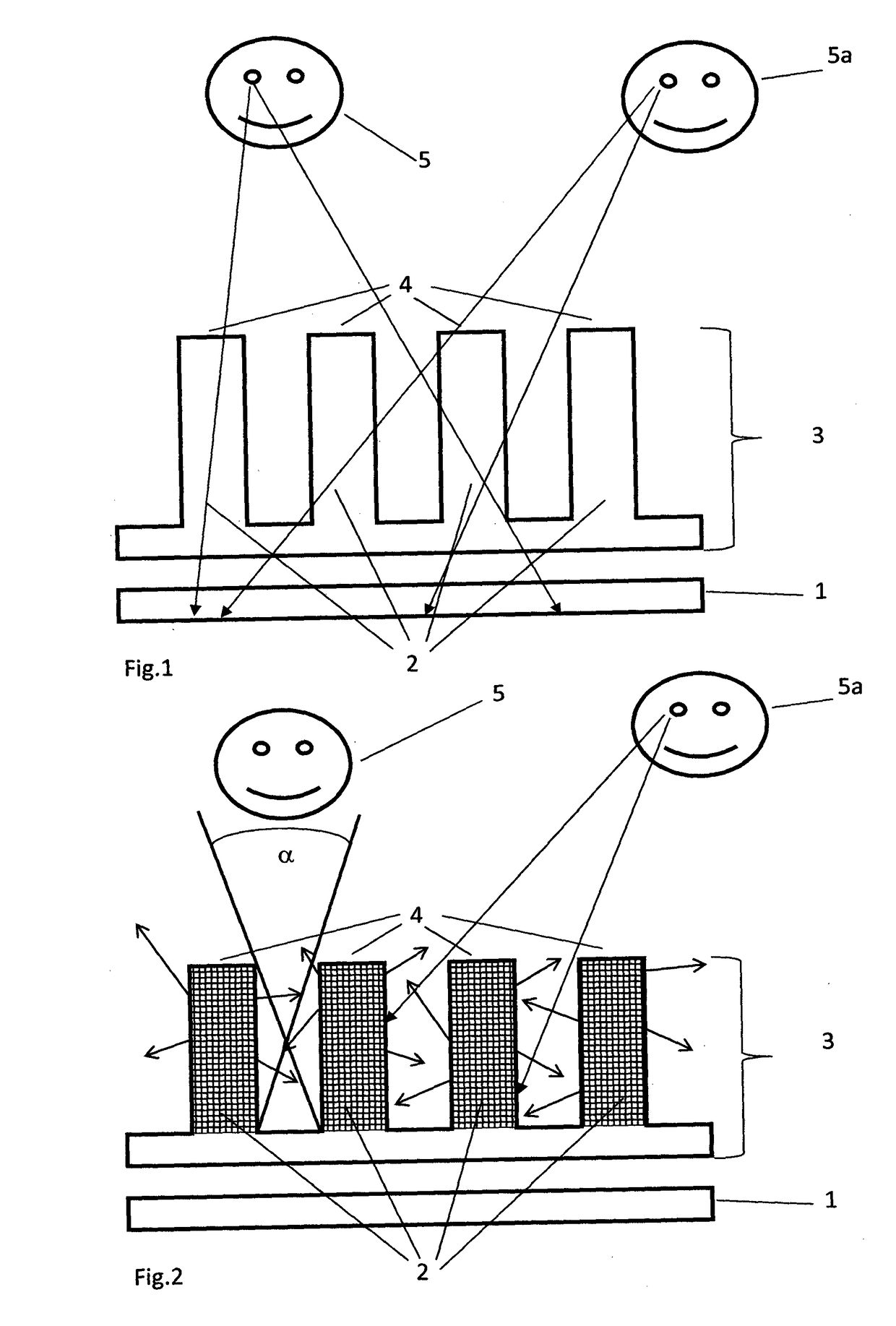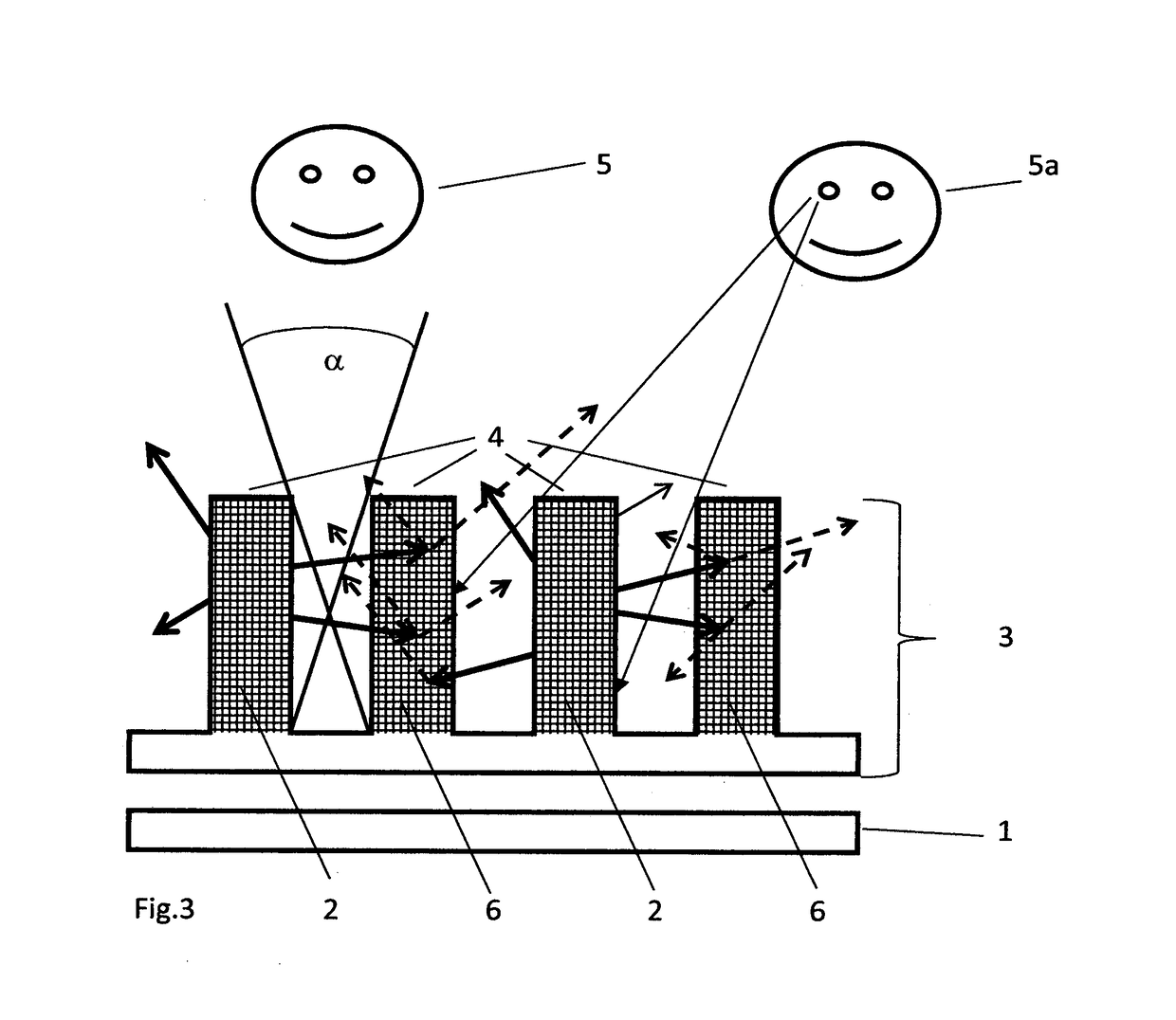Method and arrangement for the secure display of information
- Summary
- Abstract
- Description
- Claims
- Application Information
AI Technical Summary
Benefits of technology
Problems solved by technology
Method used
Image
Examples
Embodiment Construction
[0015]Therefore, the problem underlying the invention is to develop a method and an arrangement for the secure presentation of information, with the arrangement and the method intended to be implementable in lot production at affordable cost. Added aims are to ensure that the brightness of the basic display screen is reduced but insignificantly or not at all, that the engineering approach is applicable also to self-luminous display types, and that, in either mode, any extra power consumption is negligible.
[0016]According to the invention, the problem is solved by a method for operating a display screen in at least two operating modes, i.e. B1 for a free viewing mode and B2 for a restricted viewing mode, comprising the following steps:[0017]Arrangement of a switchable optical element immediately in front of a display screen as seen in a viewer's viewing direction, the said optical element ensuring switching between the at least two operating modes B1 and B2,[0018]presentation of an i...
PUM
 Login to View More
Login to View More Abstract
Description
Claims
Application Information
 Login to View More
Login to View More - R&D
- Intellectual Property
- Life Sciences
- Materials
- Tech Scout
- Unparalleled Data Quality
- Higher Quality Content
- 60% Fewer Hallucinations
Browse by: Latest US Patents, China's latest patents, Technical Efficacy Thesaurus, Application Domain, Technology Topic, Popular Technical Reports.
© 2025 PatSnap. All rights reserved.Legal|Privacy policy|Modern Slavery Act Transparency Statement|Sitemap|About US| Contact US: help@patsnap.com



